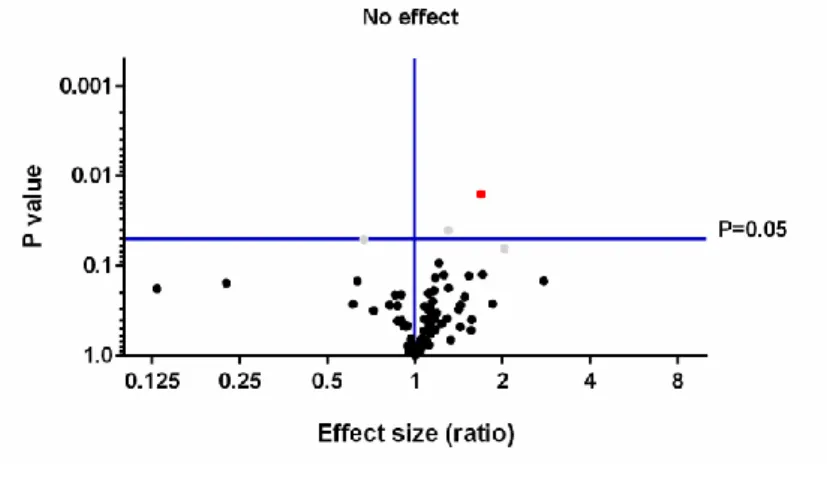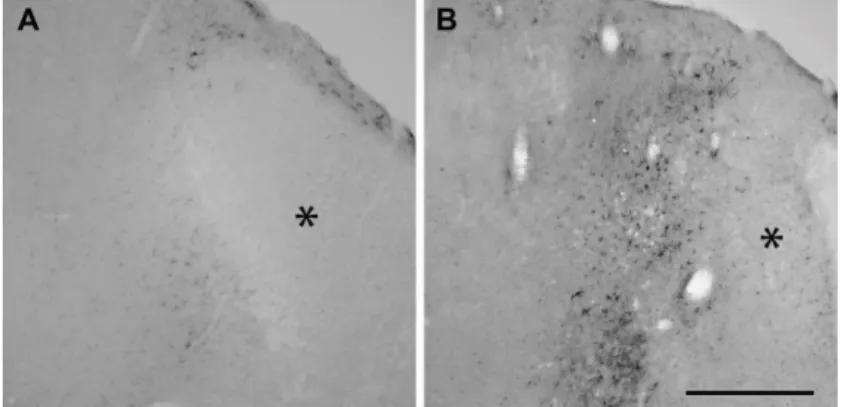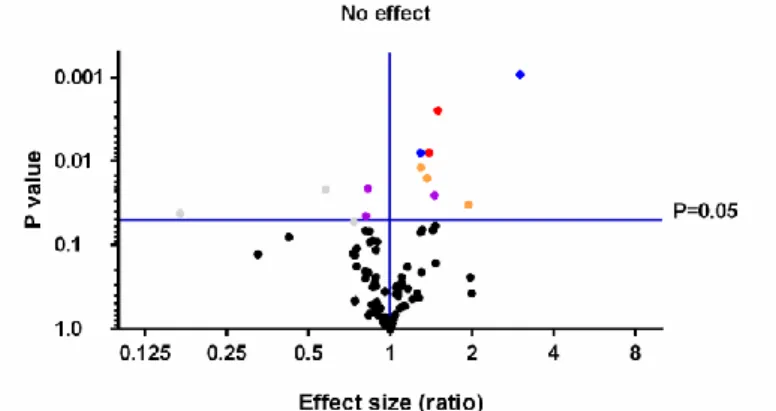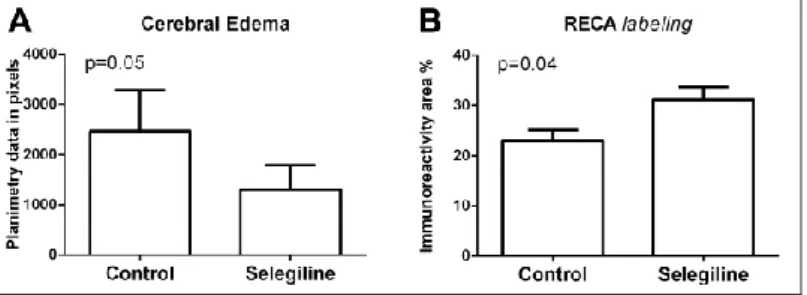Preclinical investigation of potential new therapeutic targets in experimental
cerebral large vessel occlusion
Doctoral thesis
Dr. Sándor Nardai
Semmelweis University
János Szentágothai Doctoral School of Neurosciences
Supervisors: Dr. Zoltán Nagy, D.Sc. Professor emeritus Dr. Judit Skopál Ph.D. Senior research fellow Official reviewers: Dr. Eszter Farkas, Ph.D. Senior research fellow
Dr. Tibor Kovács, Ph.D. Associate professor Chair of the comprehensive examination committee:
Dr. Dániel Bereczki, D.Sc. Professor Members of the comprehensive examination committee:
Dr. János Martos, Ph.D., Department chief Dr. Róbert Debreczeni, Ph.D., Adj. Lecturer
Budapest
2016
1 Introduction
Stroke is the second most common cause of mortality and the third most common cause of disability worldwide.
The incidence rate of stroke is changing inversely in the high- and low-income countries, with an increasing incidence in the low-income group.
Our current work focuses on the cerebral infarcts caused by emergent large vessel occlusions (ELVO). These ischemic strokes (IS) develop as a consequence of a proximal thrombotic blockage of the intra-cranial arteries, and their natural history is most often characterized by poor functional outcomes and high mortality rates.
While the findings of our preclinical investigations may have implications for other stroke subtypes, the transient middle cerebral artery occlusion (tMCAO) model used in our experiments most accurately simulates the pathophysiology of the ELVO, therefore we will limit our conclusions to this well-defined clinical entity.
Until very recently, intravenous alteplase administered within 4.5 hours after symptom onset was the only reperfusion therapy with proven efficacy in patients with acute IS. Besides the broad range of contra-indications of
2
this therapeutic modality, including coagulopathy, recent surgery and previous intra-cranial bleeding, systemic thrombolysis was proven to be much less effective in opening proximal occlusions. In the ELVO cases involving the ICA terminus the early recanalization rate was only about 30% using thrombolysis.
The percutaneous revascularization of cerebral large vessel occlusions by mechanical thrombectomy is obviously a huge step forward in the optimal treatment of IS, and based on the evidences demonstrated in recent randomized clinical trials, the new therapeutic guidelines have given the highest level of recommendation for this treatment modality in eligible patients. Ongoing clinical trials will help to further improve the patient selection in order to avoid the futile, and in some cases even harmful revascularizations. However there remains a large demand for the development of adjunctive strategies to improve procedure safety by preventing bleeding complications, and to offer alternative solutions for the patients who are non-eligible for reperfusion. New technics like radial approach, and new therapeutic targets may also facilitate the improvement of patient outcomes.
3 Objectives:
Investigation of gelatinases in stroke
The matrix metalloproteinase (MMP) 2 and 9 enzymes, also called as gelatinases, are important factors in the hemorrhagic transformation of the ischemic brain lesions: they promote blood-brain barrier injury, and accelerate cerebral cell death. Furthermore MMP 9 activity is enhanced by the thrombolytic agent used during reperfusion therapy, therefore the inhibition of MMP enzymes could be an ideal adjunctive treatment to prevent the hemorrhagic complications.
Contrary to their deleterious effect on acute lesions, gelatinases may mediate repair mechanisms during the delayed phases of stroke recovery. Pharmacological gelatinase inhibition 7 days after ischemic brain injury increased lesion size and impaired functional regeneration.
The aim of our study was to explore the molecular background of the impaired recovery associated with sub-acute metalloproteinase inhibition in ischemic stroke.
4
Investigation of selegiline in stroke
Selegiline is widely used in the therapy of Parkinson's disease. Its effectiveness is based on the selective inhibition of monoamine oxidase B (MAO-B) and on its anti-apoptotic potential attributed to its ability to eliminate reactive oxygen species and stabilize mitochondrial membrane potential.
In animal and in vitro studies our group has demonstrated previously, that selegiline decreases infarct size and attenuates apoptosis after permanent occlusion of the middle cerebral artery. The clinical use of the administration of low dose selegiline in the sub-acute phase of cerebral infarction has also been tested in a randomized, double-blinded, clinical pilot study.
Although significant functional improvement was observed in stroke patients receiving selegiline in combination with physiotherapy, the molecular basis underlying this beneficial effect remained unclear.
To understand the mechanisms how selegiline exerts its actions following focal ischemia, we addressed its effects on gene expression.
5 Methods
Transient Middle Cerebral Artery Occlusion Model The experimental setup applied in our investigations to model the pathophysiology of thrombectomy in intra- cranial ELVO has been used for simulating stroke in rodents for decades. Important to note however, that the abrupt restoration of blood flow with the removal of the occluding filament simulate the hemodynamic changes associated with mechanical thrombectomy much better, than the hemodynamics of the gradual reperfusion occurring during thrombolysis.
Right MCAO was accomplished by forming a small arteriotomy in the external carotid stump under general anaesthesia, and advancing a 25 mm 4-0 nylon suture with a 5 mm cast rubber tip into the internal carotid artery until the tip occluded the MCA.
To ensure adequate levels of cerebral ischemia, transcranial measurements of cerebral blood flow (CBF) were made over the MCA territory using Laser-Doppler Flowmetry. Placement of the suture was confirmed by reduction of LDF readings to at least 40% of baseline After 60 min of ischemia, animals were re-anesthetized and the occluding suture was removed.
6 Pharmacological interventions
Selegiline treatment was started 48 hours following the initiation of the 60 min tMCAO. The animals in the treatment arm (n=6-6) were infused with 0.2 mg/kg/day of selegiline in a vehicle of 0.9% physiological saline, delivered via implantable osmotic pumps placed intra- peritoneal for seven days.
Due to the excessive amount of inhibitor necessary for achieving sufficient gelatinase inhibitions intra-cranially with the currently available semi-selective compounds during systemic administration, we have decided to apply intra-cranial drug delivery using a dedicated stereotactic device in the MMP experiments. 7 days after the tMCAO, we injected 20 µl of FN-439 metalloproteinase inhibitor (0.59 mg/kg, 720 mM in saline) or saline, into their right lateral ventricle of the animals over 20 min, using the previously calibrated stereotaxic injector under general anesthesia. The effectiveness of gelatinase inhibition was confirmed by in-situ gelatin zymography.
The Animal Examination Ethical Council of the Animal Protection Advisory Board at the Semmelweis University, Budapest specifically approved these studies.
7 Taquman® array analysis
Nine days after the tMCAO, the animals were decapitated and their brains were rapidly removed.
Coronal sections (2 mm thick) were cut from the native brain tissue using a rat brain matrix starting 6 mm caudal to the frontal pole. Tetraphenyl-tetrazolium chloride (TTC) staining was performed on the first coronal sections (6-8 mm from the frontal pole of the brain) to identify the lesion.
Total RNA was extracted with TRIzol reagent after quantification by UV spectrophotometry; only samples with a 260:280 ratio greater than 1.7 were further processed. RNA was reverse transcribed according to the manufacturer’s instructions and samples were run parallel on a custom designed TaqMan® array containing probes for 84 representative genes involved in stroke recovery. Values of gene expression were compared between the groups after being normalized to a housekeeping control (Psmc4-Rn00821605_g1).
Immunolabeling studies
After several attempts to optimize the quality of the labeling, we have decided to process our samples as free
8
floating brain section. 9 days after the MCAO procedure rats were deeply anesthetized and perfused trans- cordially with 150 ml saline followed by 300 ml 4%
paraformaldehyde prepared in phosphate buffer (PB;
pH=7.4). Brains were removed and postfixed in 4%
paraformaldehyde for 24 h and then transferred to PB containing 20% sucrose for 2 days. Serial coronal brain sections were cut at 40 m on a cryostat between 4.0 and -6.0 mm bregma levels. Subsequently, the samples were processed for immunohistochemistry.
We have performed immunolabeling for the intracellular domain of Notch1 (NICD), Jagged 1 and we used RECA antibodies to analyze micro-vessel density in the Selegiline study. In the MMP inhibitor experiments we applied the Reticulon 4 receptor (Rtn4r) antibody. We also performed double-labeling using standard cellular markers to identify the exact cellular localization of the upregulated proteins.
Western blot for Rtn4r
In order to improve the quantification of the protein end- product Western blot analysis was performed on basis of the significant mRNA expression change of the Rtn4r gene. . Reactions were developed using HRP, and
9
quantification was performed using the Image lab 4.0.1.
software, results were analyzed after normalization with the GAPDH control.
Quantification of brain edema by MRI
Magnetic resonance imaging (MRI) study was performed on a 1.5 Tesla Philips Achieva clinical scanner using a SENSE-Flex-M coil 6 days after the initiation of selegilne treatment. After being anaesthetized with a bolus of ketamine/xilazin coctail, animals were placed in supine position inside the clinical MRI scanner, and brain edema was visualized with a T2 weighted 3D VISTA sequence. The obtained images were contrast enhanced to better differentiate edema from the background.
Subsequently, planimetric measurements were performed on the coronal sections 7 mm posterior to the frontal pole using Image J software.
Statistical analysis
Normalized c-DNA expression values, and normalized protein levels were used for analysis. We used Student T test for screening calculations, and Mann-Whitney- Wilcoxon (MWW) test for confirming our result in the Graphpad Prism 6 software.
10 Results
Changes of mRNA expression in the peri-infarct cortex following delayed gelatinase inhibition
Figure 1. Graphic display of the mRNA expression changes induced by gelatinase inhibition in the delayed phase of focal ischemia. The p values are calculated by T-test. Result show the classical volcano plot distribution with obvious induction of one gene (Rtn4 r /red dot) and borderline expressional changes of 3 others (Dcc, C-Jun, Ngf/gray dots) besides the unaltered expression of the rest of the 80 genes.
Base on the result of the array experiments we decided to further investigate the induced expression of the Rtn4r gene in the peri-infarct cortex.
11
Increased Rtn4r protein abundancy demonstrate by immunolabeling and Western blot
Figure 2. Rtn4r immunoreactivities in the peri-infarct region of the cerebral cortex. A: Rtn4r labeling is elevated in the peri-infarct region, the appearance of labeling indicates the border of the lesion. B: The distribution of Rtn4r following gelatinase inhibitor treatment is similar to that of non-treated MCAO but an increased intensity of Rtn4r labeling is in response to the FN439 treatment. Star symbols (*) indicate the lesioned areas. Scale bar = 500 µm.
In order to better quantify the Rtn4r protein expression in the peri-infarct cortex, we have perfomed western blotting analysis of the native brain samples. The blots have also confirmed the increased protein level for the Rtn4 receptor (p= 0,004) in the treated animals.
12
Double labeling identified Rtn4r on astrocytes.
Figure 3. Demonstration of the presence of Rtn4r 1 in astrocytes but not in other cell types. In all panels, Rtn4r is green and the other markers are labeled red. Clear co- localization is shown with the S100 astrocyte marker (arrows) (C) while double labeling with NeuN (A) with vWF (B) and Iba1 (D) show no co-localization with the Rtn4r indicated by the lack of yellow labeling. Scale bar
= 50 µm.
13
Selegiline induced Notch-Jagged signaling, anti- apoptosis markers, and glia associated genes
Figure 4. Graphic display of mRNA expression changes induced by selegiline treatment following focal ischemia.
The p values are calculated by T-test. Colors indicated the 4 groups of genes with altered expression: Notch- Jagged signaling (red: Noth1, Jag1), glia associated genes (orange: Ptprz1, Mag, Mog), anti-apoptotic (blue:Bcl2/1, Xiap) and pro-apoptotic (purple: Apaf 1, Diablo, Card10) genes. Gene expressional changes not confirmed by MWW test are shown in gray (Proc, Procr, Icam).
The most significant finding of our array was the induced expression of the Notch1 receptor and its ligand Jagged1, therefore we decided to further investigate their expression on the protein level.
14
Immunolabeling for NICD and Jagged 1
Figure 5. NICD immunoreactivities in the peri-infarct region of the striatum. The distribution of NICD following selegiline treatment (B) is similar to that of non-treated MCAO (A) but an increased intensity is seen
Figure 6. Jagged 1 immunoreactivity in the peri-infarct region of the striatum. In response to selegiline, an increased number of intensively labeled cells are present in the peri-infarct region (B). Scale bar = 400 um.
15
Quantitative measurement of immunolabeling indicated increased level NICD and Jagged 1 in the peri-infarct region of selegiline-treated rats as compared to control animals with MCAO lesion.
Double-labeling confirmed that both NICD and Jagged 1 were expressed primarily on astrocytes (figure not shown.)
Measurement of microvascular density and cerebral edema following selegiline treatment
Figure 7. The effect of selegiline treatment on cerebral edema and microvascular density. Columns demonstrate significantly decreased planimetric area of cerebral edema in the selegiline treated animals (A), while the microvascular density shown by RECA immunoreactivity is increased in comparison to controls.
Error bars represent SEM.
16 Discussion
Improving the functional integrity of the blood brain barrier, without limiting the microvascular remodeling and neuronal plasticity is a very challenging, but very important task in developing future stroke therapies. We experimentally tested two pharmacological interventions, selegiline treatment and gelatinase inhibition following cerebral large vessel occlusion.
The subacute gelatinase inhibition studied in our experiments caused a significant upregulation of the Reticulon 4 receptor expression of the astrocytes in the peri-infarct cortex, while selegiline treatment induced the expression of the Notch 1 receptor and its ligand Jagged 1 on the perilesional astrocyte, besides a number of anti- apoptosis genes.
Although our findings suggest, that both studied pharmacological interventions influence reactive gliosis, the effect of selegiline was accompanied by a significant reduction of edema on MRI and an increased density of the capillary network, suggesting the restoration of physiological barriers. Gelatinase inhibition on the other hand is known to decrease microvascular remodeling in the subacute phase of stroke, therefore our results
17
confirm the previously published observations that the proliferative effect of gelatinase inhibition on astrocytes is more likely to result in scar formation, than in neurorestorative action. Our data implicates, that an eventual prolonged inhibition of the gelatinases following cerebral infarction may risk to cause increased reactive gliosis, and therefore may interfere with functional recovery.
In contrast, Selegiline treatment has been previously shown to exert a cytoprotective effect on human brain capillaries in vitro, and we also found an increased microvascular density in the peri-infarct region of the selegiline treated rats. Selegiline was shown to improve functional outcomes in stroke, we therefore believe that the newly described beneficial effects on blood brain barrier function, together with the observed increase in microvascular density, may have further significance in stroke treatment.
Our findings in general underlie the importance of interpreting the experimental results in stroke research in accordance with to the neurovascular unit concept.
18
Publications discussed in the dissertation 1. Nardai S , Dobolyi A , Skopal J , Lakatos K ,
Merkely B , Nagy Z,
Delayed Gelatinase Inhibition Induces Reticulon 4 Receptor Expression in the Peri-Infarct Cortex.
JOURNAL OF NEUROPATHOLOGY AND EXPERIMENTAL NEUROLOGY 75:(4) pp. 379- 385. (2016) IF:3,8
2. Nardai S , Dobolyi A , Pal G , Skopal J , Pinter N , Lakatos K , Merkely B , Nagy Z
Selegiline promotes NOTCH-JAGGED signaling in astrocytes of the peri-infarct region and improves the functional integrity of the neurovascular unit in a rat model of focal ischemia. RESTORATIVE
NEUROLOGY AND NEUROSCIENCE 33:(1) pp.
1-14. (2015) IF:2,5 Other original publications
3. Ruzsa Z , Nemes B , Pinter L , Berta B , Toth K , Teleki B , Nardai S , Jambrik Z , Szabo G , Kolvenbach R , Huttl K , Merkely B
A randomised comparison of transradial and transfemoral approach for carotid artery stenting:
RADCAR (RADial access for CARotid artery stenting) study EUROINTERVENTION 10:(3) pp. 381- 391. (2014) IF: 3,8
19
4. Ruzsa Z , Edes IF , Nardai S , Tóth K, Nemes B, Merkely B
Transradial and transulnar access for iliac artery interventions using sheathless guiding systems: a feasibility study.
CATHETERIZATION AND CARDIOVASCULAR INTERVENTIONS [Epub ahead of print] 2016. IF:2,1 5 Kolossváry M , Szilveszter B , Édes IF, Nardai S ,
Vörös V, Hartyánszky I, Merkely B, Voros S, Maurovich-Horvath P.
Comparison of Quantity of Coronary Atherosclerotic Plaques Detected by Computed Tomography Versus Angiography
AMERICAN JOURNAL OF CARDIOLOGY 2016 Apr 5. doi: 10.1016/j.amjcard.2016.03.031. [Epub ahead of print] IF:3.3
6 Edes IF , Ruzsa Z , Szabo G , Nardai S , Becker D , Benke K , Szilveszter B , Merkely B
Clinical predictors of mortality following rotational atherectomy and stent implantation in high-risk patients:
A single center experience.
CATHETERIZATION AND CARDIOVASCULAR INTERVENTIONS 86:(4) pp. 634-641. (2015) IF:2,1 7. Ruzsa Z , Toth K , Jambrik Z , Kovacs N , Nardai S ,
Nemes B , Huttl K , Merkely B
Transradial access for renal artery intervention INTERVENTIONAL MEDICINE AND APPLIED SCIENCE 6:(3) pp. 97-103. (2014)





